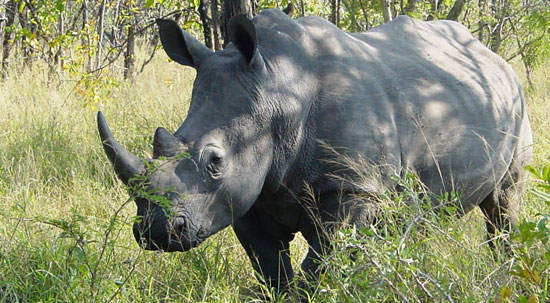
It wasn't long ago since the Caribbean monk seal was officially listed as extinct by the US Government. And now the IUCN, the International Union for Conservation of Nature, reports that the Northern white rhino (Ceratotherium simum cottoni) is "on the brink of extinction".
According to older reports the only remaining population of Northern white rhino is restricted in the wild to Garamba National Park in the Democratic Republic of Congo. The population was 30 in April 2003 but was reduced due to poaching to only four confirmed animals by August 2006. Now in 2008 the IUCN haven't been able to find any Northern white rhinos at all.
Dr Martin Brooks, Chair of the IUCN SSC African Rhino Specialist Group says:
Although the future seems very dark for the Northern white rhino the population of the African black rhino (Diceros bicornis) has had a small boost from 2005. The population has increased from 3730 in 2005 to 4180 in 2007. But the African black rhino still remains as Critically Endangered on the IUCN Red List.
Dr Richard Emslie, Scientific Officer of the IUCN SSC African Rhino Specialist Group, says that:
The report concludes that poaching still remains as the biggest threat for rhinos in both the Democratic Republic of Congo and Zimbabwe.
"Even though protection from poaching is critical, effective rhino conservation must also include intensive monitoring and biological management to ensure annual growth rates of at least 5 % per year so that surplus rhinos are made available to create new populations," Dr Martin Brooks said.

Recommended Comments
Join the conversation
You can post now and register later. If you have an account, sign in now to post with your account.